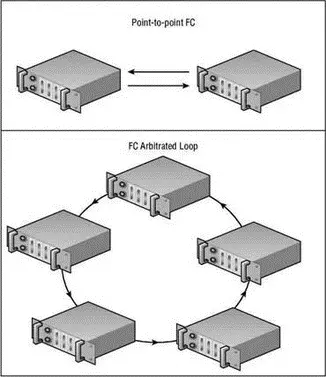Chris McCain - Mastering VMware® Infrastructure3
Здесь есть возможность читать онлайн «Chris McCain - Mastering VMware® Infrastructure3» — ознакомительный отрывок электронной книги совершенно бесплатно, а после прочтения отрывка купить полную версию. В некоторых случаях можно слушать аудио, скачать через торрент в формате fb2 и присутствует краткое содержание. Город: Indianapolis, Год выпуска: 2008, ISBN: 2008, Издательство: WILEY Wiley Publishing, Inc., Жанр: Программы, ОС и Сети, на английском языке. Описание произведения, (предисловие) а так же отзывы посетителей доступны на портале библиотеки ЛибКат.
- Название:Mastering VMware® Infrastructure3
- Автор:
- Издательство:WILEY Wiley Publishing, Inc.
- Жанр:
- Год:2008
- Город:Indianapolis
- ISBN:978-0-470-18313-7
- Рейтинг книги:5 / 5. Голосов: 1
-
Избранное:Добавить в избранное
- Отзывы:
-
Ваша оценка:
- 100
- 1
- 2
- 3
- 4
- 5
Mastering VMware® Infrastructure3: краткое содержание, описание и аннотация
Предлагаем к чтению аннотацию, описание, краткое содержание или предисловие (зависит от того, что написал сам автор книги «Mastering VMware® Infrastructure3»). Если вы не нашли необходимую информацию о книге — напишите в комментариях, мы постараемся отыскать её.
Mastering VMware® Infrastructure3 — читать онлайн ознакомительный отрывок
Ниже представлен текст книги, разбитый по страницам. Система сохранения места последней прочитанной страницы, позволяет с удобством читать онлайн бесплатно книгу «Mastering VMware® Infrastructure3», без необходимости каждый раз заново искать на чём Вы остановились. Поставьте закладку, и сможете в любой момент перейти на страницу, на которой закончили чтение.
Интервал:
Закладка:
With all of the effort that will be put into designing the appropriate LUN structures, you will undoubtedly run into situations in which the design will require change. Luckily for the VI3 administrative community, the product is very flexible in the way virtual machine disk files are managed. In just a few short steps, a virtual machine's disk files can be moved from one LUN to another. The simplified nature of relocating disk files means that if you begin with one approach and discover it does not fit your environment, you can easily transition to a more suitable LUN structure. In Chapter 6, we'll detail the steps required to move a virtual machine from one datastore to another.
ESX Network Storage Architectures: Fibre Channel, iSCSI, and NAS
VMware Infrastructure 3 offers three shared storage options for locating virtual disk files, ISO files, and templates. Each storage technology presents its own benefits and challenges and requires careful attention. Despite their differences, there is often room for two or even all three of the technologies within a single virtualized environment.
Fibre Channel Storage
Despite its high cost, many companies rely on fibre channel storage as the backbone for critical data storage and management. The speed and security of the dedicated fibre channel storage network are attractive assets to companies looking for reliable and efficient storage solutions.
Fibre channel SANs can run at either 2GFC or 4GFC speeds and can be constructed in three different topologies: point-to-point, arbitrated loop, or switched fabric. The point-to-point fibre channel architecture involves a direct connection between the server and the fibre channel storage device. The arbitrated loop, as the name suggests, involves a loop created between the storage device and the connected servers. In either of these cases, a fibre channel switch is not required. Each of these topologies places limitations on the scalability of the fibre channel architecture by limiting the number of nodes that can connect to the storage device. The switched fabric architecture is the most common and offers the most functionality, so we will focus on it for the duration of this chapter and throughout the book. The fibre channel switched fabric includes a fibre channel switch that manages the flow of the SCSI communication over fibre channel traffic between servers and the storage device. Figure 4.10 displays the point-to-point and arbitrated loop architectures.

Figure 4.10Fibre channel SANs can be constructed as point-to-point or arbitrated loop architectures.
The switched fabric architecture is more common because of its scalability and increased reliability. A fibre channel SAN is made up of several different components, including:
Logical unit numbers (LUNs) A logical configuration of disk space created from one or more underlying physical disks. LUNs are most commonly created on multiple disks in a RAID configuration appropriate for the disk usage. LUN design considerations and methodologies will be covered later in this chapter.
Storage device The storage device houses the disk subsystem from which the storage pools or LUNs are created.
Storage Processor (SP) One or more storage processors (SPs) provide connectivity between the storage device and the host bus adapters in the hosts. SPs can be connected directly or through a fibre channel switch.
Fibre channel switch A hardware device that manages the storage traffic between servers and the storage device. Although devices can be directly connected over fibre channel networks, it is more common to use a fibre channel switched network. The term fibre channel fabric refers to the network created by using fibre-optic cables to connect the fibre channel switches to the HBAs and SPs on the hosts and storage devices, respectively.
Host bus adapters (HBAs) A hardware device that resides inside a server that provides connectivity to the fibre channel network through a fibre-optic cable.
These SAN components make up the infrastructure that processes storage requests and manages the flow of traffic among the nodes on the network. Figure 4.11 shows a commonly configured fibre channel storage area network with two ESX Servers, redundant fibre channel switches, and a storage device.

Figure 4.11Most storage area networks consist of hosts, switches, and a storage device interconnected to provide servers with reliable and redundant access to storage pools residing in the storage device.
A SAN can be an expensive investment, predominantly because of the redundant hardware built into each of the segments of the SAN architecture. As shown in Figure 4.11, the hosts were outfitted with multiple HBAs connected to the fibre channel fabric, which consisted of multiple fibre channel switches connected to multiple storage processors in the storage device. The trade-off for the higher cost is less downtime in the event of a single piece of hardware failing in the SAN structure.
Now that we have covered the hardware components of the storage area network, it is important that, before moving into ESX specifics, we discuss how the different SAN components communicate with one another.
Each node in a SAN is identified by a globally unique 64-bit hexadecimal World Wide Name (WWN) or World Wide Port Name (WWPN) assigned to it. A WWN will look something like this:
22:00:00:60:01:B9:A7:D2
The WWN for a fibre channel node is discovered by the switch and is then assigned a port address upon login to the fabric. The WWN assigned to a fibre channel node is the equivalent of the globally unique Media Access Control (MAC) address assigned to network adapters on Ethernet networks.
Once the nodes are logged in and have been provided addresses they are free to begin communication across the fibre channel network as determined by the zoning configuration on the fibre channel switches. The process of zoning involves the configuration of a set of access control parameters that determine which nodes in the SAN architecture can communicate with other nodes on the network. Zoning establishes a definition of communication between storage processors in the storage device and HBAs installed on the ESX Server hosts. Figure 4.12 shows a fibre channel zoning configuration.

Figure 4.12Zoning a fibre channel network at the switch level provides a security boundary that ensures that host devices do not see specific storage devices.
Zoning is a highly effective means of preventing non-ESX hosts from discovering storage volumes that are formatted as VMFS. This process effectively creates a security boundary between fibre channel nodes that simplifies management in large SAN environments. The nodes within a zone, or segment, of the network can communicate with one another but not with other nodes outside their zone. The zoning configuration on the fibre channel switches dictates the number of targets available to an ESX Server host. By controlling and isolating the paths within the switch fabric, the switch zoning can establish strong boundaries of fibre channel communication.
In most VI3 deployments, only one zone will be created since the VMotion, DRS, and HA features require all nodes to have access to the same storage. That is not to say that larger, enterprise VI3 deployments cannot realize a security and management advantage by configuring multiple zones to establish a segregation of departments, projects, or roles among the nodes. For example, a large enterprise with a storage area network that supports multiple corporate departments (i.e., marketing, sales, finance, and research) might have ESX Server hosts and LUNs for each respective department. In an effort to prevent any kind of cross-departmental LUN access, the switches can establish a zone for each department ensuring only the appropriate LUN access. Proper fibre channel switch zoning is a critical tool for separating a test or development environment from a production environment.
Читать дальшеИнтервал:
Закладка:
Похожие книги на «Mastering VMware® Infrastructure3»
Представляем Вашему вниманию похожие книги на «Mastering VMware® Infrastructure3» списком для выбора. Мы отобрали схожую по названию и смыслу литературу в надежде предоставить читателям больше вариантов отыскать новые, интересные, ещё непрочитанные произведения.
Обсуждение, отзывы о книге «Mastering VMware® Infrastructure3» и просто собственные мнения читателей. Оставьте ваши комментарии, напишите, что Вы думаете о произведении, его смысле или главных героях. Укажите что конкретно понравилось, а что нет, и почему Вы так считаете.












